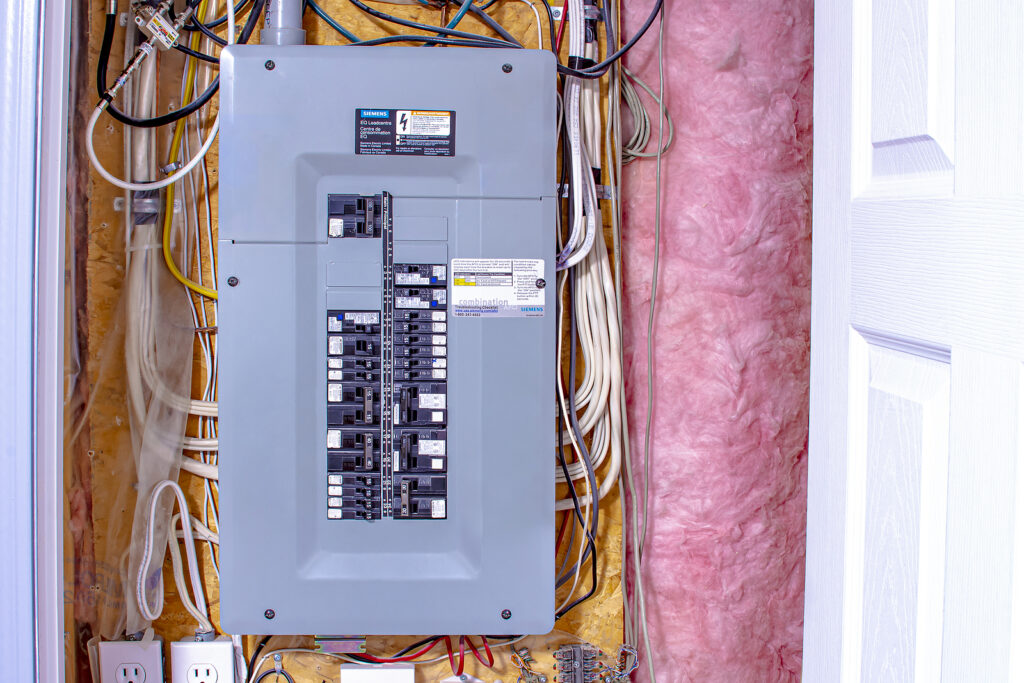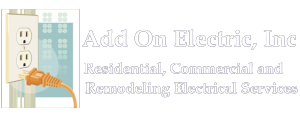Albuquerque Home Electrical Checklist for Spring 2024

The temperatures are warming up and spring is right around the corner here in Albuquerque!
Today is the perfect time to do a quick safety check of your home’s electrical system before spring storms arrive. By looking everything over and making a few fixes, you can avoid problems and keep your family safe.
Let me walk you through what to check and how to handle any issues you come across. Let’s go!
Take a Close Look at Outlets and Switches
First things first, grab a flashlight and start inspecting every electrical outlet and light switch in your home. I mean every single one – even in rooms you don’t use often. Look closely for any signs of damage. Do you see scorch marks, cracked plastic, exposed wires, or loose plugs? Those can be warning signs of trouble.
Outlets and switches that are broken or loose can lead to fires or someone getting shocked. Definitely not good. If you see any problems, turn off the power to that outlet at your breaker box. Then contact an electrician to replace the faulty outlet or switch. Safety first!
While you’re looking closely, also check for dust buildup. Use a dry cloth to gently clean around outlets and switchplates. Built up dust and dirt can cause connections to degrade over time. A little cleaning can go a long way.
Examine Your Circuit Breakers
After your outlet inspection, head to your home’s main breaker box. If you aren’t sure where to find it, it’s usually located in the basement, laundry room, or garage. The breaker box has all the circuit breakers that control power in your home.
Check that all the circuit breakers are in the correct on or off position. It’s possible for breakers to trip without you noticing. If you see any breakers that are off, flip them fully on to reset the circuit.
Pay special attention for any breakers that seem to trip frequently. This usually means there’s an overloaded circuit somewhere. Call an electrician to inspect – overloading wires can lead to dangerous overheating.
While at the breaker box, look for dust or dirt accumulation. Gently vacuum the box if needed. And if your circuit breaker box is more than 40 years old, it may need to be replaced with a newer, safer model. An electrician can assess its condition.
Give Your Outdoor Outlets Extra Care
Head outside next. Your outdoor outlets need a little care before spring arrives. Examine all of your exterior outlets closely. Do you see cracked plastic or exposed wires? Make sure covers are installed to keep rain out. Use plastic shields if covers won’t fit.
Outdoor outlets see a lot of wear and tear from the elements. Replace any that are damaged. Keep cords tidy and don’t overload circuits. Only use outdoor-rated extension cords.
When not in use, make sure to keep all extension cords disconnected and stored indoors. Leaving them outside exposed to rain and sun will quickly degrade the wires. A damaged extension cord can put you at risk of shock or fires.
Test Smoke and Carbon Monoxide Detectors
Safety next! Grab a step stool and press the Test button on each smoke detector and carbon monoxide detector in your home. You should hear an audible alarm sound. If not, try replacing batteries. Smoke detectors should be replaced every 10 years, while CO detectors typically last 5-7 years. Check the manufacture date on each and replace any that are expired. Properly working alarms save lives!
And don’t forget to install new batteries in your detectors every year, even if they seem to be working fine. Changing batteries once a year is the best way to avoid dead batteries when you really need them. Mark your calendar so you don’t forget!
Have Your Home’s Electrical Inspected
If your home is over 40 years old, it’s a good idea to schedule a full electrical inspection. Outdated wiring that hasn’t been maintained can become cracked and brittle over decades of use. This poses a serious fire hazard.
Even newer homes can develop issues if wiring was installed incorrectly or amateur DIY repairs were done. A thorough inspection by a licensed electrician will uncover any problems lurking behind walls and under floors that you can’t see. Safety is worth the small investment.
Check Exterior Lighting
Let’s head back outside again. Is your outdoor lighting in good working order? Walk around at night and check for any burnt out bulbs in your exterior lights. Replace bulbs and clean fixtures so lights shine bright.
Position spotlights to fully illuminate walking paths and stairways. This helps prevent falls and injuries when you take the dog out at night. Proper lighting is also important for home security and deterring crime.
And remember to keep all bulb wattages within fixture recommendations. Overpowered bulbs can lead to melted sockets and fires. Stick to the wattage on the fixture label to be safe.
Test GFCIs
Last item on your electrical checklist – GFCI testing. Take a few minutes to test any GFCI outlets found in your kitchen, bathrooms, laundry room, basement, garage, or outdoor areas. These outlets help prevent shocks.
Plug a light or radio into the outlet, press the “Test” button, and confirm the power cuts off. Then press “Reset” to restore power. If it doesn’t trip or reset, the GFCI is faulty. Contact an electrician to replace any failing GFCIs. They are an important safety device.
Phew, I know that was a long list to go through! But taking these steps now will pay off when storms roll through this season. Preventative care reduces the chance of outages, fires, or accidents down the road.
Be sure to reach out to a licensed electrician if you have any concerns about your electrical system or run into issues you can’t diagnose yourself. Stay safe and enjoy springtime in Albuquerque! Let me know if you have any other home maintenance questions.
